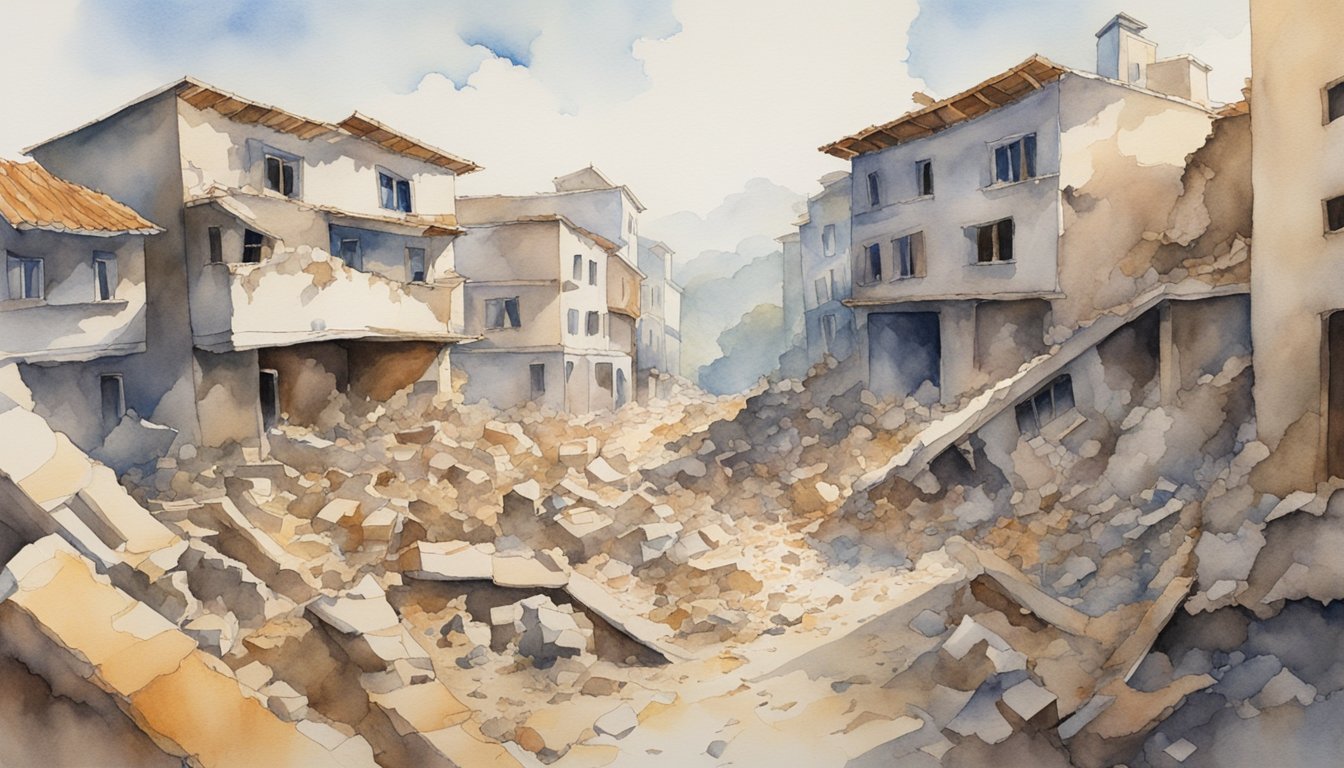Understanding Earthquakes
What Is an Earthquake?
An earthquake is a sudden shaking or rolling event caused by the movement of parts of the Earth’s crust, its outermost layer. It occurs when two blocks of the Earth suddenly slip past each other along a fault or fault plane. The location below the Earth’s surface where the earthquake starts is called the hypocenter, while the location directly above it on the surface is referred to as the epicenter.
Causes of Earthquakes
Earthquakes are primarily caused by the release of energy within some limited region of the Earth’s rocks. This energy can result from various factors, such as elastic strain, gravity, chemical reactions, or even the motion of massive bodies. Of all these causes, the release of elastic strain is the most significant, as it is the only form of energy that can accumulate enough to generate large earthquakes. Tectonic earthquakes, the most common type, occur along plate boundaries when stress and friction between tectonic plates cause a sudden release of energy.
Measuring Earthquakes
Earthquakes are measured using two main scales: the Richter scale and the moment magnitude scale. The Richter scale measures the amplitude of seismic waves, while the moment magnitude scale calculates the energy released by an earthquake. Both scales typically provide similar results, but the moment magnitude scale is more accurate for larger quakes. Seismologists also use the intensity of shaking to assess earthquake impacts, with more significant harm expected in areas experiencing higher intensity.
Types of Seismic Waves
There are two main types of seismic waves generated by earthquakes: body waves and surface waves. Body waves include primary (P) and secondary (S) waves, which travel through the Earth’s interior. P-waves are faster than S-waves, resulting in a distinctive pattern during an earthquake. On the other hand, surface waves cause the most damage at the Earth’s surface and are classified into two types: Love waves and Rayleigh waves.
| Seismic Wave | Description |
|---|---|
| Primary (P) waves | Fastest waves, travel through solid and liquid |
| Secondary (S) waves | Slower waves, travel only through solids |
| Love waves | Horizontal surface waves, cause side-to-side motion |
| Rayleigh waves | Vertical surface waves, cause up-and-down motion |
Earthquake Epicenters
An earthquake’s epicenter is the point on the Earth’s surface directly above its hypocenter or focus, where the shaking is typically most intense. By studying seismic activity at various locations, scientists can determine the epicenter and learn more about the nature of the earthquake and its underlying fault plane. This information is crucial for understanding potential risks and implementing suitable disaster mitigation strategies.
Impact of Earthquakes

Historical Earthquakes
Throughout history, many devastating earthquakes have occurred. The 1960 Valdivia earthquake in Chile, measured at 9.5 magnitude, is the largest earthquake ever recorded. Other notable earthquakes include the 1556 Shaanxi earthquake in China, the 1755 Lisbon earthquake in Portugal, and the 2004 Sumatra-Andaman earthquake, which generated a massive tsunami affecting several countries around the Indian Ocean.
Geographical Distribution
Earthquakes are not evenly distributed across the Earth’s surface. They primarily occur along tectonic plate boundaries near what is called the Ring of Fire, which is a horseshoe-shaped area around the Pacific Ocean consisting of many volcanoes and earthquake zones. Countries such as Japan, Chile, New Zealand, and the United States (particularly California) are more prone to earthquakes due to their location near this active region.
Another major earthquake zone is the Alpide belt, stretching from the Mediterranean to Central Asia, encompassing countries like Turkey, Iran, and Pakistan. Intraplate quakes can also occur within tectonic plate interiors, but they are much rarer.
Seismology and Prediction
The study of earthquakes is called seismology, which involves using seismographs to measure earthquake waves and gather data about their behavior. Although scientists can’t predict the exact time and location of an earthquake, they closely monitor regions with high seismic activity to notice aftershocks and foreshocks, which can provide insights into future seismic events.
Earthquake research also involves planetary science, as scientists have discovered “marsquakes” on Mars, providing further understanding of the geology and tectonics of other celestial bodies.
Effects on Human Structures
Earthquakes can have a significant impact on human-made structures, causing them to collapse and leading to loss of life. Some countries, such as Japan, have strict building codes to minimize damage and increase the overall preparedness of the population. Engineers are also developing more advanced seismic-resistant designs in various parts of the world.
Earthquake Hazards
Aside from building collapse, earthquakes can trigger additional hazards such as tsunamis, volcanic activity, landslides, and fires. These secondary effects can sometimes prove even more devastating than the initial quake, as seen with the 2004 Sumatra-Andaman earthquake.
Efforts are being made to improve monitoring systems, community awareness, and earthquake preparedness, with the aim of reducing the impact of future earthquakes on human lives and infrastructure.

